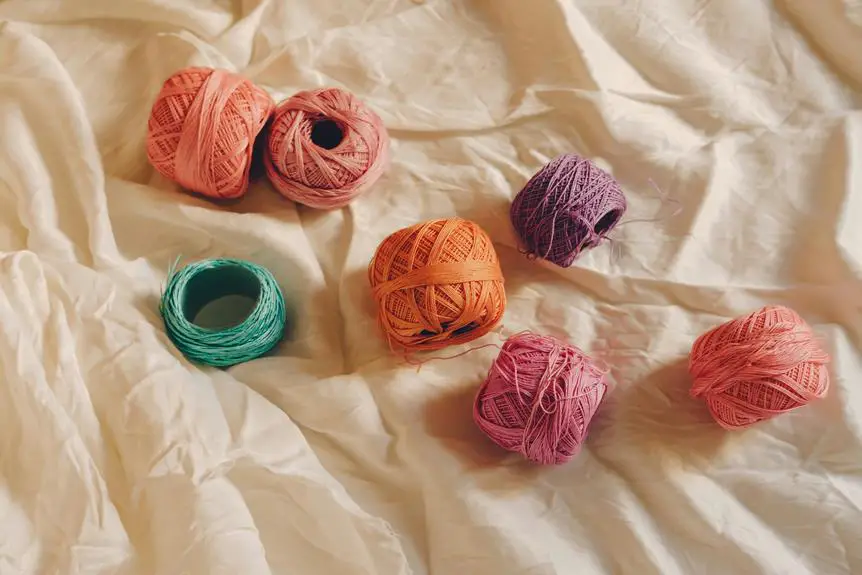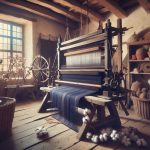You might think wool dryer balls are a modern laundry hack, but their roots trace back to traditional textile practices. Originally crafted from felted wool, these balls weren't just about efficiency; they represented a sustainable choice long before eco-consciousness was trendy. As you explore their journey from utility to innovation, you'll find intriguing shifts in design and purpose that reflect changing consumer values. What does this evolution reveal about our relationship with everyday household items, and how might it shape the future of laundry?
Table of Contents
Key Takeaways
- Wool dryer balls originated from traditional practices using felted wool to enhance drying efficiency and reduce laundry drying time.
- Historically, wool has been utilized in textiles for warmth, durability, and comfort in garments and blankets across various cultures.
- The transition to modern laundry saw wool dryer balls emerge as a natural alternative to chemical-laden fabric softeners and dryer sheets.
- Made from 100% biodegradable wool, dryer balls minimize environmental impact by reducing waste and chemical usage in laundry.
Origins of Wool Dryer Balls
Wool dryer balls originated as a natural solution for reducing drying time and softening laundry without harmful chemicals. You might be surprised to learn that these eco-friendly alternatives emerged from traditional practices, where people used felted wool to improve the efficiency of drying clothes.
By tossing a few of these balls into your dryer, you're not just speeding up the drying process; you're also preventing laundry from clumping together. These balls work by creating space between your clothes, allowing hot air to circulate more effectively. This means you'll likely save energy and time with each load.
Plus, since they're made from 100% wool, they're biodegradable and free from synthetic materials that can leach into your laundry. As you use wool dryer balls, you're participating in a trend that emphasizes sustainability and health.
The origins of these handy tools highlight a shift towards more natural household solutions. So, when you reach for your dryer balls, you're not just making laundry day more efficient; you're also embracing a centuries-old practice that respects both your clothes and the environment.
Traditional Uses in Textiles
Throughout history, felted wool has been used in various textile applications, showcasing its versatility beyond just dryer balls. You might be surprised to learn just how many uses wool has had in traditional textiles. From clothing to household items, its durability and insulating properties have made it a favorite choice for many artisans.
Here's a quick overview of some traditional uses of felted wool:
| Application | Description | Benefits |
|---|---|---|
| Clothing | Used for making warm garments like coats and hats | Excellent insulation, moisture-wicking |
| Blankets | Felted wool blankets provide warmth and comfort | Soft, cozy, and durable |
| Rugs | Wool rugs add style and warmth to homes | Stain-resistant, long-lasting |
| Crafts | Used in various artisan crafts | Easy to manipulate, versatile |
As you can see, felted wool has played a significant role in textiles. Its unique qualities have allowed it to adapt to many needs over time, making it an essential material in both historical and contemporary applications.
Transition to Modern Laundry
In modern laundry routines, many people are discovering the benefits of using wool dryer balls as a natural alternative to fabric softeners and dryer sheets. These handy tools not only soften your clothes but also reduce drying time by helping to separate fabrics and improve air circulation in the dryer. You'll find that using wool dryer balls can lead to fresher laundry without the added chemicals found in conventional products.
Switching to wool dryer balls is easy. Simply toss them into your dryer with your wet laundry, and let them work their magic. They're reusable for years, which makes them a cost-effective choice for your laundry routine. Plus, you can customize your experience by adding a few drops of essential oils to the balls for a subtle fragrance, giving your laundry a personal touch.
You might also appreciate that wool dryer balls are suitable for all fabrics, including delicate items. As you embrace this simple change, you'll not only enjoy softer clothes but also streamline your laundry process, making it quicker and more efficient.
Wool dryer balls are a small step towards a more natural and effective laundry routine.
Environmental Impact and Benefits
Using wool dryer balls not only enhances your laundry routine but also offers significant environmental benefits by reducing waste and chemical usage. When you choose these natural alternatives, you're making a positive impact on the planet.
Unlike conventional dryer sheets, which are often single-use and contribute to landfill waste, wool dryer balls can last for years, minimizing your environmental footprint.
Here are some of the key benefits:
- Less Plastic Waste: By ditching disposable dryer sheets, you're cutting down on the plastic that ends up in landfills and oceans.
- Chemical-Free Softening: Wool dryer balls naturally soften your clothes without harmful chemicals, making your laundry safer for your family and the environment.
Incorporating wool dryer balls into your laundry routine not only results in softer clothes but also supports a cleaner, greener planet. You'll feel good knowing each load is a step toward sustainability, contributing to a healthier environment for future generations.
Future Trends and Innovations
The future of laundry care is set to embrace even more innovative and sustainable solutions, such as advanced wool dryer balls that enhance efficiency and performance. You'll likely see dryer balls infused with essential oils, allowing you to customize your laundry's scent naturally while reducing static cling.
Additionally, technology integration is on the horizon. Imagine dryer balls equipped with smart sensors that monitor drying times and moisture levels, optimizing your laundry cycle and saving energy. This kind of innovation not only promotes efficiency but also helps in reducing wear and tear on your fabrics.
Moreover, you might encounter dryer balls made from recycled materials, further supporting sustainability efforts. As consumer awareness grows, manufacturers will prioritize eco-friendly practices, ensuring that every aspect of laundry care is environmentally responsible.
The trend toward minimalism and simplicity in household products will also influence the design of wool dryer balls. Expect sleeker, more stylish options that blend seamlessly with your laundry routine while maintaining their functional benefits.
Frequently Asked Questions
Can Wool Dryer Balls Be Used With All Types of Fabrics?
Yes, you can use wool dryer balls with most fabrics, including cotton and synthetics. However, avoid delicate items like silk or lace, as the agitation might cause damage. Always check care labels for guidance.
How Long Do Wool Dryer Balls Typically Last?
Wool dryer balls typically last around two to four years, depending on usage and care. You'll find they maintain their effectiveness throughout this time, helping to reduce drying time and soften your laundry naturally.
Do Wool Dryer Balls Make Noise in the Dryer?
Wool dryer balls don't typically make much noise in the dryer. You might hear a soft thumping as they work, but it's generally minimal and shouldn't disturb you during laundry time.
Can I Make My Own Wool Dryer Balls at Home?
Yes, you can definitely make your own wool dryer balls at home! Just use 100% wool yarn, wind it into tight balls, and felt them by soaking in hot water, then drying in the dryer.
Are There Any Allergens in Wool Dryer Balls?
Wool dryer balls are generally hypoallergenic, but if you're sensitive to wool, you might experience irritation. It's best to test them on a small scale or consult your doctor if you have concerns.
- How Does Ring Spun Cotton Affect Garment Fit and Shape Retention? - August 13, 2024
- What Are the Challenges in Producing Ring Spun Cotton? - August 13, 2024
- Is Ring Spun Cotton Suitable for Plus-Size Clothing? - August 13, 2024




